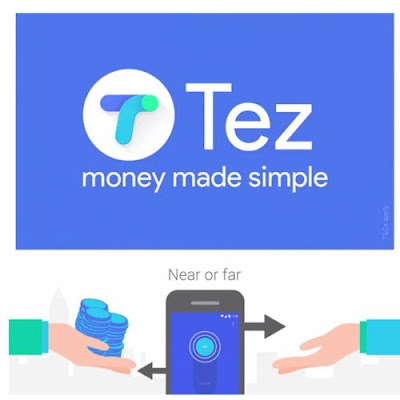TOR Browser - Everything you need to know before using TOR.
We live in an era of free-flowing data, where any person
with an Internet connection has seemingly all the information in the world at
their fingertips. Yet, while the Internet has greatly expanded the ability to
share knowledge, it has also made issues of privacy more complicated, with many
worrying their own personal information, including their activity on the
Internet, may be observed without their permission. Not only are government
agencies able to track an individual’s online movements, but so too are
corporations, who have only become bolder in using that information to target
users with ads. Unseen eyes are everywhere.
Not too many computer users have heard of the terms
"proxy" or "proxy server," or understand what they mean or
do. A proxy server is a website/server that acts as a middleman for you to get
on the Internet. When you use a proxy server, you're not contacting a website
directly—your information runs through a special computer that passes along
your request for you.
But more than that, a proxy packages your request with a
different "identifier." In other words, your IP address is no longer
visible; instead, your request borrows the IP address of the proxy.
Have you ever wanted to browse the Internet anonymously? The
truth is that browser settings such as "incognito mode" or
"private window" don't quite cut it. If you want real anonymity,
you're going to want to use Tor, formerly known as The Onion Router that has
become the subject of discussion and notoriety. Like many underground phenomena
on the Internet, it is poorly understood, shrouded in the sort of technological
mysticism that people often ascribe to things like hacking or bitcoins.
Tor is software that allows users to browse the Web
anonymously. Developed by the Tor Project, a non-profit organization that
advocates for anonymity on the internet, Tor was originally called The Onion
Router because it uses a technique called onion routing to conceal information
about user activity. Perhaps ironically, the organization receives the bulk of
its funding from the United States government, which views Tor as a tool for
fostering democracy in authoritarian states.
What is TOR?
Tor is short for The Onion Router (thus the logo) and was
initially a worldwide network of servers developed with the U.S. Navy that
enabled people to browse the internet anonymously. Tor is a free software
program that you load onto your computer (like a browser) that hides your IP
address every time you send or request data on the Internet. The process is
layered with heavy-duty encryption, which means your data is layered with
privacy protection.
The Tor network disguises your identity by moving your
traffic across different Tor servers, and encrypting that traffic so it isn't
traced back to you. Anyone who tries would see traffic coming from random nodes
on the Tor network, rather than your computer.
To access this network, you just need to download the Tor browser. Everything you do in the browser goes through the Tor network and
doesn't need any setup or configuration from you. That said, since your data
goes through a lot of relays, it's slow, so you'll experience a much more
sluggish internet than usual when you're using Tor.
How TOR works?
The Tor network runs through the computer servers of
thousands of volunteers (over 4,500 at time of publishing) spread throughout
the world. Your data is bundled into an encrypted packet when it enters the Tor
network. Then, unlike the case with normal Internet connections, Tor strips
away part of the packet's header, which is a part of the addressing information
that could be used to learn things about the sender such as the operating
system from which the message was sent.
Finally, Tor encrypts the rest of the addressing
information, called the packet wrapper. Regular Internet connections don't do
this.
The modified and encrypted data packet is then routed
through many of these servers, called relays, on the way to its final
destination.The roundabout way packets travel through the Tor network is akin
to a person taking a roundabout path through a city to shake a pursuer.
Each relay decrypts only enough of the data packet wrapper
to know which relay the data came from, and which relay to send it to next. The
relay then re-wraps the package in a new wrapper and sends it on.
The layers of encrypted address information used to
anonymize data packets sent through Tor are reminiscent of an onion, hence the
name. That way, a data packet's path through the Tor network cannot be fully
traced.
Some regular Internet data packets are encrypted using a
protocol called Secure Socket Layer (SSL) or its newer, stronger cousin
Transport Layer Security (TLS). For example, if you submit your credit card
information to an online store, that information travels across the network in
an encrypted state to prevent theft.
However, even when you use SSL or TLS, it's still possible
for others to intercept those packets and see the information's metadata — who
sent that encrypted information and who received it — because the addressing
wrappers in SSL or TLS are not encrypted. In Tor, they are, which hides the
sender and receiver of a given transmission.
Further, if you use the Tor Browser to visit a website that
does not use encryption to secure users' connections, then your data packet
will not be encrypted when it makes the final hop from the last Tor relay to
the website's server. That's because the data packet's destination lies outside
the Tor network. So it's best to be sure that a website offers some kind of SSL
or TLS encryption, usually denoted by an "https" instead of simply
"http" in the Web address, before trying to access it anonymously.
Is Tor secure?
Good question! Security and anonymity go hand in hand on the
Internet. As an online anonymizer, Tor was designed to be secure.
However, documents leaked by former National Security Agency
(NSA) contractor Edward Snowden show that the NSA has tried to crack,
infiltrate or weaken any encryption that the agency does not itself control.
In light of this news, nearly all independent encryption and
online communication services have become suspect, including Tor.
"The online anonymity network Tor is a high-priority
target for the National Security Agency," cryptography expert Bruce
Schneier, who is helping British newspaper The Guardian analyze its archive of
leaked Snowden documents, wrote in a piece for the newspaper.
But despite this warning, another Snowden document published
by The Guardian suggests that the NSA can't crack Tor after all, although the
agency has developed some workarounds.
"We will never be able to de-anonymize all Tor users
all the time," reads the document, a PowerPoint presentation used
internally at the NSA and its British equivalent GCHQ.
Instead, the NSA exploited a vulnerability in Firefox
browsers (on which the Tor Browser is based) to monitor individual users' Tor
activity. That vulnerability has since been patched in Firefox and recent Tor
Browser Bundle updates.
"The good news is that they went for a browser exploit,
meaning there's no indication they can break the Tor protocol or do traffic
analysis on the Tor network," wrote The Tor Project on its blog in
response to The Guardian's article.
"Tor still helps here: you can target individuals with
browser exploits, but if you attack too many users, somebody's going to notice.
So even if the NSA aims to surveil everyone, everywhere, they have to be a lot
more selective about which Tor users they spy on."









Approximately complete information 👍 on one place...
ReplyDeleteGood job bro...